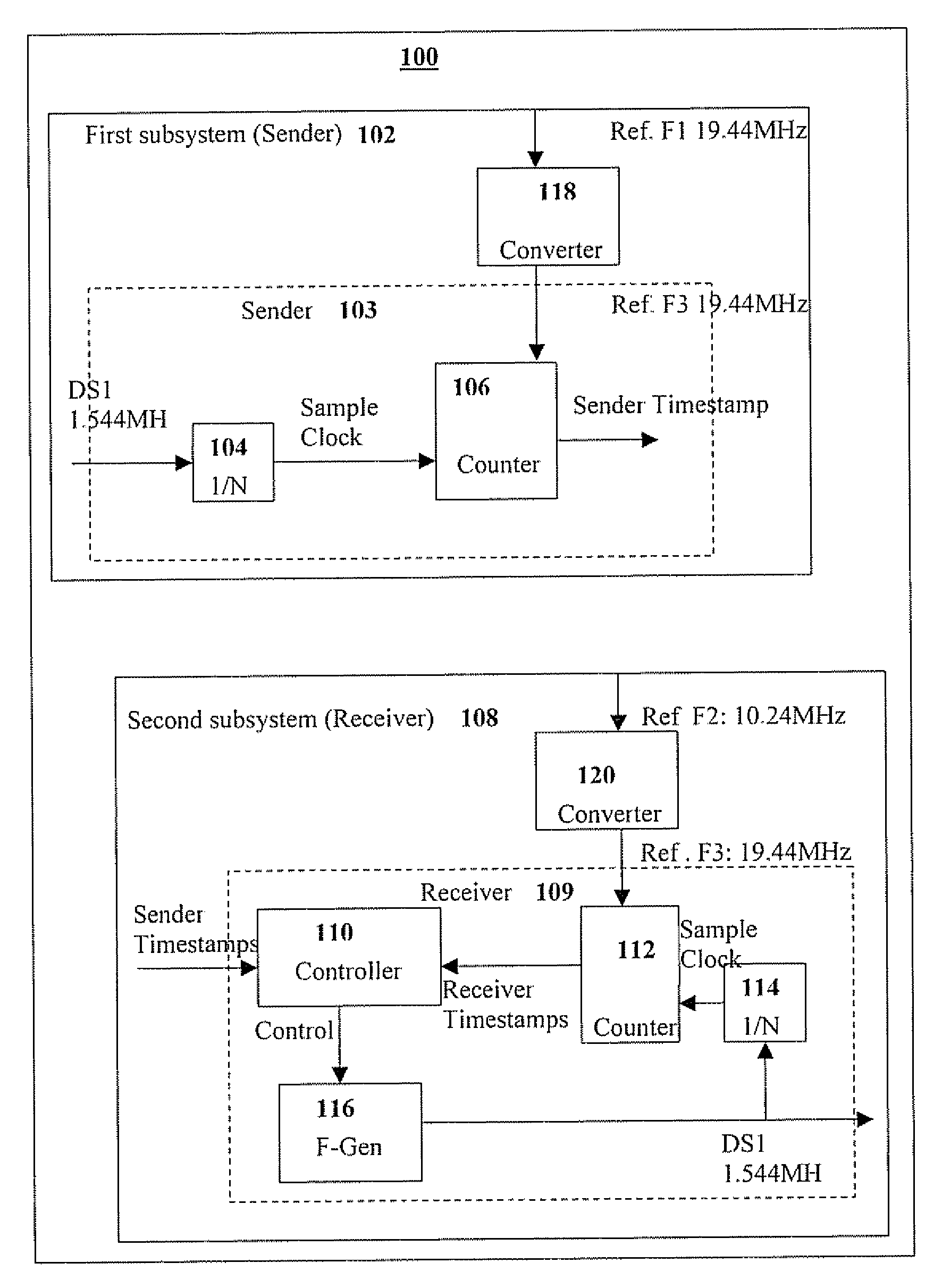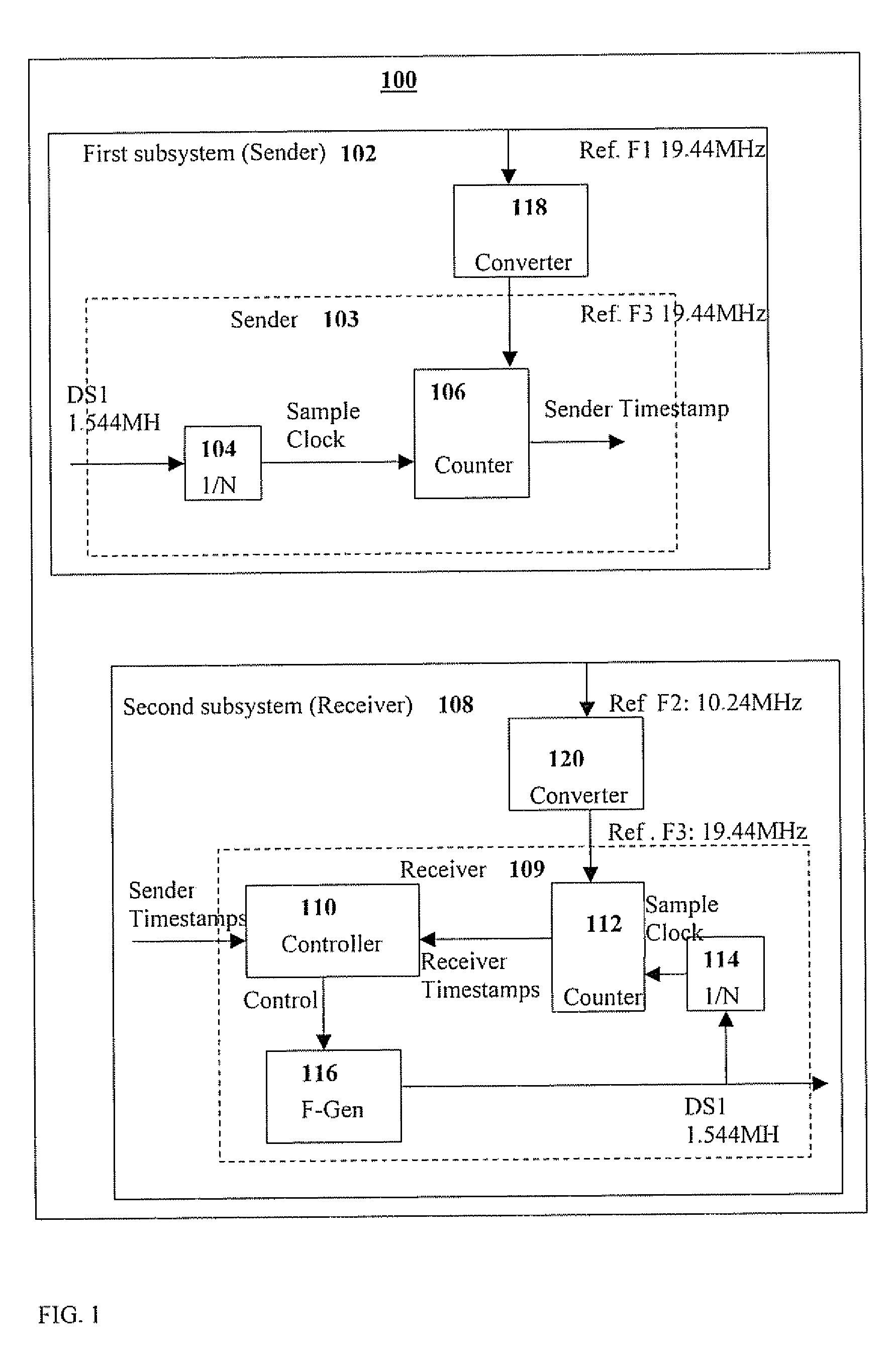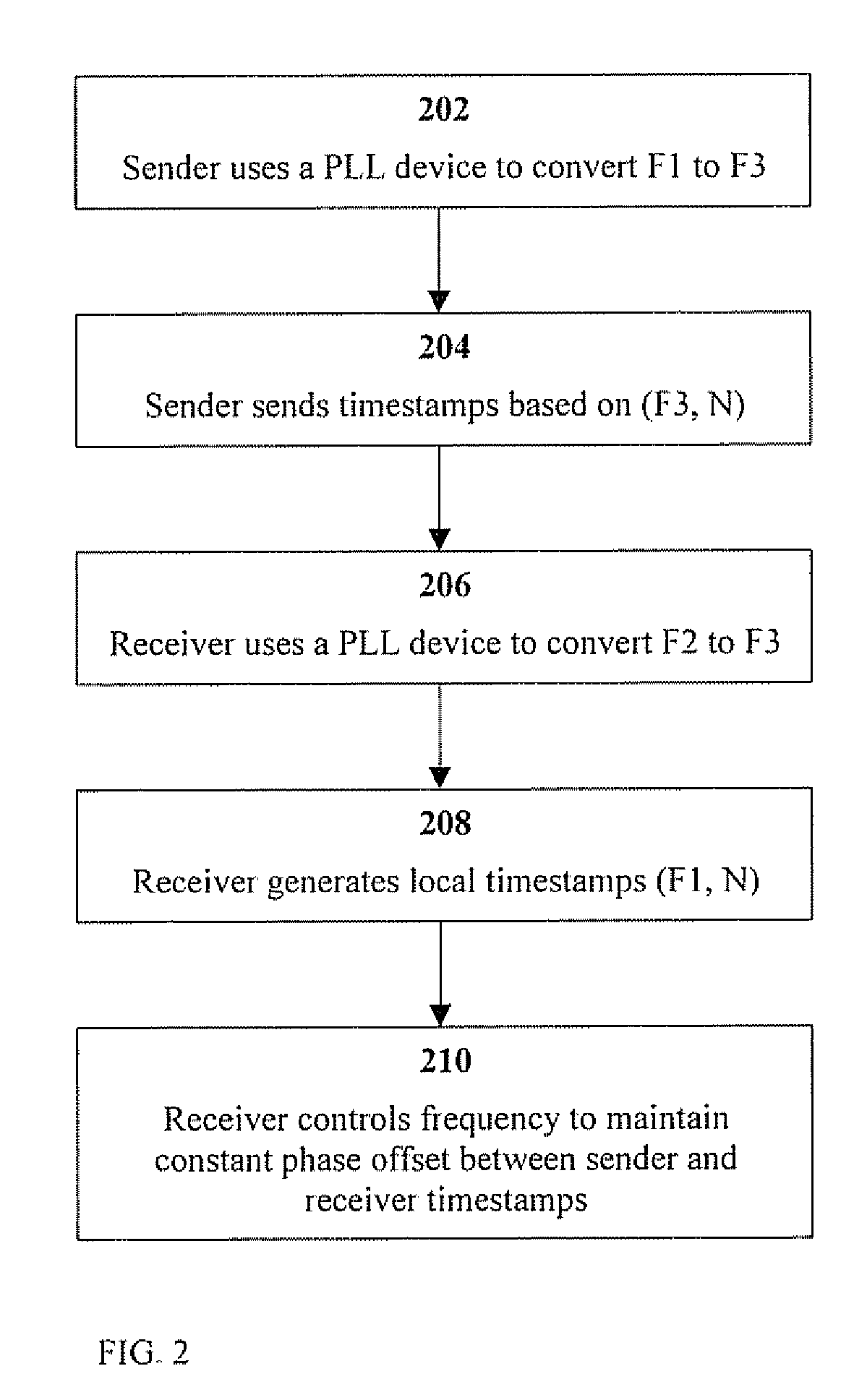Asymmetric Differential Timing
a technology of differential timing and clock timing, applied in the field of clock timing in telecom networks, can solve the problems of increasing the price adding a pll device to the differential timing design, and reducing the applicability to various deployment scenarios, so as to simplify the cost and complexity of the system, reduce the cost and complexity, and reduce the cost of the system. the effect of complexity
- Summary
- Abstract
- Description
- Claims
- Application Information
AI Technical Summary
Benefits of technology
Problems solved by technology
Method used
Image
Examples
Embodiment Construction
[0027] The present invention discloses an asymmetric differential timing solution in which receiver and sender in each “subsystem” as defined above use the highest available clock frequency traceable to the same source for time-stamping and in which no PLL is required to convert between different frequencies. FIG. 3 describes the main steps of one embodiment of the asymmetric differential timing method of the present invention. In step 302, a sender in a first subsystem uses a clock traceable to a common clock source with highest frequency and accuracy available to it (frequency F1) for time-stamping N cycles of a ‘service clock’, In step 304, a receiver in a second subsystem uses a clock traceable to a common clock source with highest frequency and accuracy available to it (second frequency F2) to generate local timestamps of M cycles of a locally generated ‘service clock’. In step 306, the receiver aligns local (receiver) timestamps and timestamps received from the sender to the s...
PUM
 Login to view more
Login to view more Abstract
Description
Claims
Application Information
 Login to view more
Login to view more - R&D Engineer
- R&D Manager
- IP Professional
- Industry Leading Data Capabilities
- Powerful AI technology
- Patent DNA Extraction
Browse by: Latest US Patents, China's latest patents, Technical Efficacy Thesaurus, Application Domain, Technology Topic.
© 2024 PatSnap. All rights reserved.Legal|Privacy policy|Modern Slavery Act Transparency Statement|Sitemap



